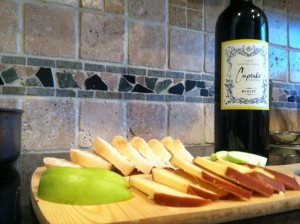“A wineman’s guide to lay? No. A guideman’s drunk to wine? Nope. Time to close my tab.”
This tutorial is for foodies who enjoy the consumption of fermented grapes but wouldn’t know how to choose a respectable wine or pair the selection with its respective food.
My wine world was black and white – or, should I say, red and white – before I became a bartender. I could only tell some were dark and others light, some saccharine and others tart, and I didn’t know the lexicon to explain the subtle differences.
Here is your cheat sheet for the next time you want to host a party that requires a more sophisticated vibe than would be channeled by Natty Ice in a punch bowl (I once experienced this at a frat party).
WineFolly does a great job of explaining wine in chart form (and pretty much everything else I am about to tell you), but I will zoom in and explain each part to you. It’s easy to think you know what you’re doing until the chart is gone and someone asks you how you know your friend might have a Pinot Noir in her hand.
The pigment and opacity of wine tells the onlooker about its density, age, acidity and the kind of grapes used.
- The denser the wine, the darker the color.
- The older the wine, the darker hue it will be.
- The more acid in the wine, it will be lighter in color.
- The more opaque, the younger the wine.
- The more dry your moth feels after a sip, the more tannin.
Now what about these words you hear all the time but don’t know what they mean in wine jargon?
Acidity – A certain sting on the tongue. The longer a wine sits, the less acidic it becomes because fruit naturally breaks down into sugar when it ferments.
Ester – Aroma, scent.
Oak – Wine is aged in oak barrels, which leave their flavors as the wine sits. The flavor depends on the origin and composition of the oak.
Tannin – A naturally occurring chemical, usually in wood, grape seeds and stems, that adds bitterness to wine..
Body – The strength of the wine’s taste in your mouth. For example, wines with higher alcohol levels are usually full-bodied.
Malolactic Fermentation – An extra round of fermentation that uses bacteria to remove malic acid in the wine, which makes it dense, and replace it with lactic acid. This process makes wine smooth on the tongue.
 White
White
- The clearer or greener hue, the grassier or earthier the wine will taste.
- The gold or copper hue gives a fruitier taste.
- The more butter or vanilla, it has most likely been aged in oak.
- Citrus fruits like mango pineapple are used.
Red
- The more smoke, mocha or caramel, the more oak.
- The more mint, lavender or cinnamon, the more herbs or flowers were used.
- Berries are usually used.
- Has more tannin than white wine.
Pairing with Food

The most important thing I learned about wine and food pairings is, the heavier the food, the heavier the wine. My boss, a wine salesman from Spain named Julio, told me:
*read in Spanish accent*
“If you’re drinking wine with your food, you have to showcase the wine.”
He means that the beverage should always be slightly more bolder than your steak, sweeter than your cupcake, more tart than your smelly cheese, and lighter than your broccoli.

Toodles for now, and I hope this helped.



